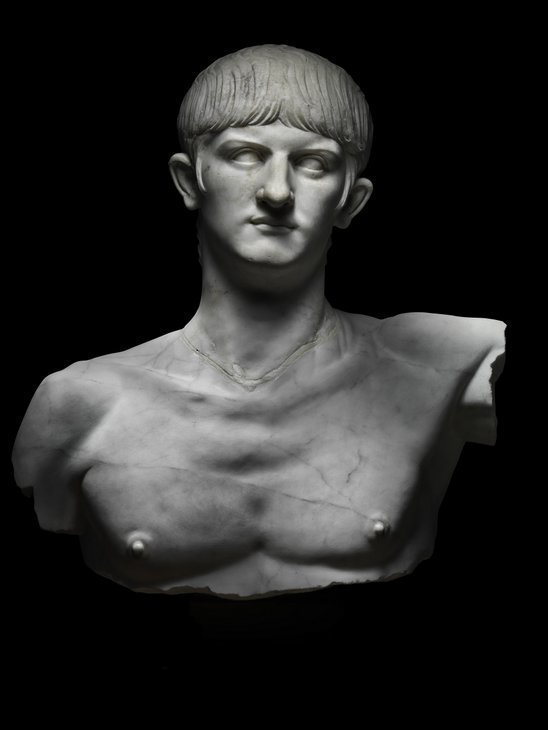Nero At The British Museum: A Rome That Smacked Of Game Of Thrones
Looks like this article is a bit old. Be aware that information may have changed since it was published.

If you could go back in time, would you kill a young Hitler? One of those moral conundrums that comes up in scifi films and at dinner parties. And it crosses my mind in the British Museum, studying a cherubic statue of a boy who would go on to become Nero — a man who executed his mother and his wife, and — it's said — watched on as his own city burned to the ground.
Other artfully sculpted statues in the exhibition and busts mark out Nero's family tree, and it quickly transpires that none of them were pure as the driven snow; everyone seemed to be scheming, with betrayal and assassination something every emperor was rightly nervous about.
If this all sounds very Game of Thrones so far, then meet Ancient Rome's very own Cersei Lannister — Agrippina, mother of Nero.

When Nero became Emperor, aged 16, it was his mum who was pulling the strings. She'd done much manoeuvring to win him the title, and relished the power and perks that came from having an emperor for a son.
Coins from Nero's early reign give Agrippina more prominence to her image than his. But as Nero grew into his role, he grasped more control, and later coins giving them equal billing. After a paranoid Nero had his mother killed — in a self-sinking boat no less — she disappeared from the currency altogether.
Nero's problems weren't just domestic. He had to wage war against the Parthians and counter Boudica's rebellion back in Britain; The Man Behind the Myth shows human remains from the battles, plus a bronze head of Nero found in Suffolk. Probably torn from a statue when a Roman settlement was sacked by Boudica's army, it's a tangible artefact of hatred towards Nero and his empire.

Nero preferred war games rather than war; he adored watching gladiatorial combat and chariot racing. While his extravagant spending on such sport may have endeared him to the public, it earned the ire of senators. Soon, the only thing keeping Nero safe was his elite praetorian guard. We find six such soldiers beautifully carved on a relief panel originally from the Arch of Claudius. The sheer detail here means ancient Romans like this live on all these centuries later. It's a highlight of the show.
During Nero's reign, a great fire ravaged Rome and rumours abounded that the emperor was the fire-starter who then idly stood by, hence 'fiddling while Rome burned'. Actually, Nero wasn't even in Rome at the time. He did, however, blame a new Jewish sect for the fire, a sect that would later become known as Christians, and had them burned alive in what Nero deemed a fitting fate.

Eventually the scheming senators would get the better of Nero, and he was forced to take his own life once he was declared an enemy of the state. Those that came after were quick to sully his name, even if many citizens still held him in high esteem, and his fall created a chaotic power vacuum that led to more unrest.
Like a well-rounded GoT character, Nero was complex. He was cruel yet occasionally generous; loved and hated; a tyrant, yet arguably no worse than the elites surrounding him.
This sizeable exhibition doesn't cast judgement on Nero; it simply plies us with beautiful objects and fascinating insights, letting us come to our own conclusions on the man behind the myth.
Nero: The Man Behind the Myth is on at The British Museum from 27 May - 24 October. Tickets are £20 for adults.
Last Updated 25 May 2021




